Work is nearing completion on a cubicle shed on the farm of Donal Kennedy and his father Paddy from Gortletteragh in Co Leitrim.
The farm operates a full-confinement system, with the herd of 130 pedigree Holstein cows housed all year.
“We have had cows housed here for the last five years,” Donal said.
“Availability of land around here would be a major issue and a barrier to expansion of a grazing-based system. We just didn’t have the land around the parlour.
“We have wet heavy land around here and this system suits us. It is labour-intensive, but we can produce more milk than we would be able to on a grazing system.
"We would have struggled to push above 60 cows if we hadn’t gone to a confinement system.”
Paddocks are zero-grazed, with cows being fed fresh grass daily.
The farm aims to produce over one million litres in 2020, with the new cubicle shed seen as a key piece of infrastructure to facilitate this. In 2018, cows averaged 7,000 litres at 3.3% protein and 4.5% fat.
The farm operates a split-calving system, with the autumn block calving from September on and the spring block starting in January. Bull calves will be sold off the farm while heifer calves will be kept until they are five months old, at which point they will go off to another farmer for contract rearing.
Pictures one and two & figure one
“We were thinking about this investment for a long time.
"Cows are having to come from four different sheds to be milked and, while we have it well set up, it does add to the labour required,” Donal said.

Picture one.
The new cubicle shed, which is fitted with 96 cubicles, is built alongside an existing cubicle shed with space for 32 cows. This will mean that all cows in the herd can be housed under the one roof.
The shed is an A-roof design with feeding on two sides. There is a double row of cubicles and a single row of cubicles running down through the shed.
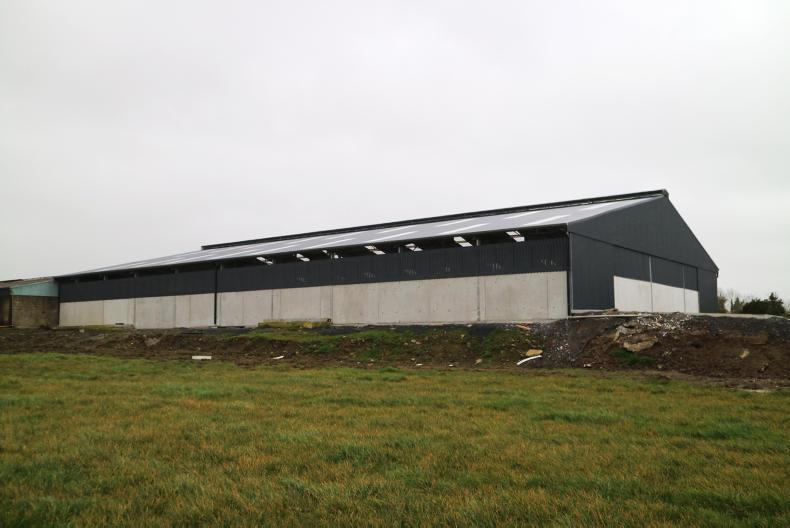
Picture two.
“We had thought about leaving one side open. It would have been cheaper but we are in a very exposed site here so it wasn’t a viable option,” according to Donal.

Pictures three and four
The decision was made to install Easyfix rubber cubicles throughout the shed.
The double row of cubicles has a total length of 4.6m with approximately 60cm between brisket boards. Brisket boards themselves are 15cm wide.
Single cubicles beds are 2.3m long in total with no barriers to restrict cows when they go to rise.
One mistake that can often be made is to put a wall in front of a single row of cubicles, this will greatly restrict cows when they try to rise.
All cubicles are fitted with mattresses also.
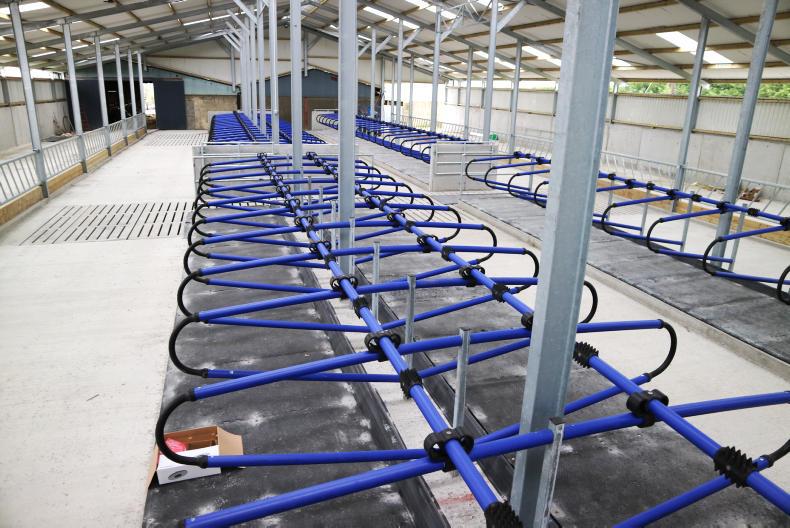
Picture three.
“When you are operating a confinement system I think there is even more of a focus on cow comfort because you can see the benefits in the bulk tank; that’s why we didn’t go for steel cubicles,” Donal said.
“When you look at cows getting up and down they are much more comfortable and if they hit the side of the rubber cubicle, they won’t hurt themselves.”
For farmers operating a confinement system, there are some key areas to look out for when it comes to cow comfort. The best thing a farmer can do is to get in around cows and observe them closely several times throughout the day. Is there evidence of scrapes or hair loss from cows hitting cubicle partitions? This could be a sign of a bad cubicle design.

Picture four.
We want cows to be doing one of three things at any stage throughout the day, these are either standing to eat, lying and chewing the cud or being milked.
If they are not doing one of these three things, we have to ask why and if poor shed design is to blame.
When it comes to cubicle design, we can use a cubicle comfort index (CCI) to put a figure on how comfortable the cubicle is. A cow will only go to a cubicle to lie down. If she is not lying down, we need to ask why.
CCI is calculated by counting how many cows are in contact with cubicles, then counting how many are lying down and how may are standing up.
If, for example, there are four out of 10 lying down, then the CCI is 40%. You should repeat this at least three times throughout the day and get an average score. The target CCI is 85%.
Movements can often highlight a cow that is not comfortable.
For example, if there is a cow standing in cubicles and they drop the back leg down off the cubicle or they might drop a knee and stand again; this indicates some reluctance to lie down.
Pictures five to nine
Feed passageways on either side of the shed are 5m wide to allow easy access for the diet feeder (Picture five).
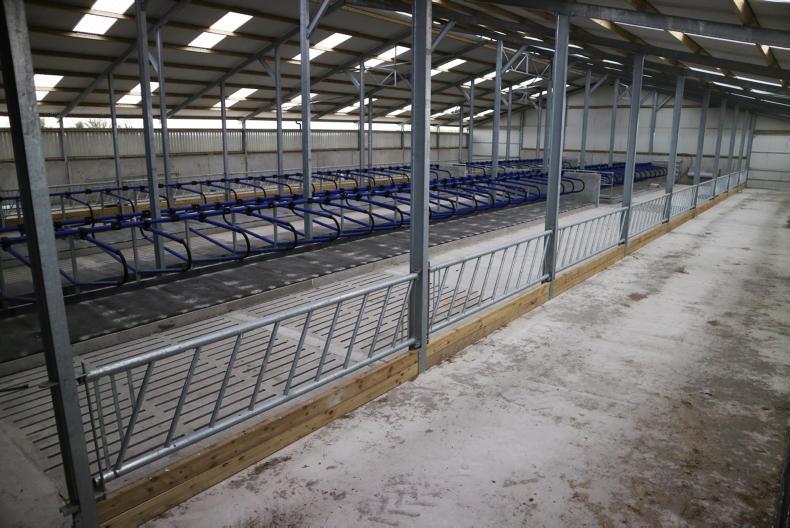
Picture five.
There are crossover points at either end of the shed which are 2.6m wide. There is also a 2m wide crossover point half way down the length of the shed (Picture six).
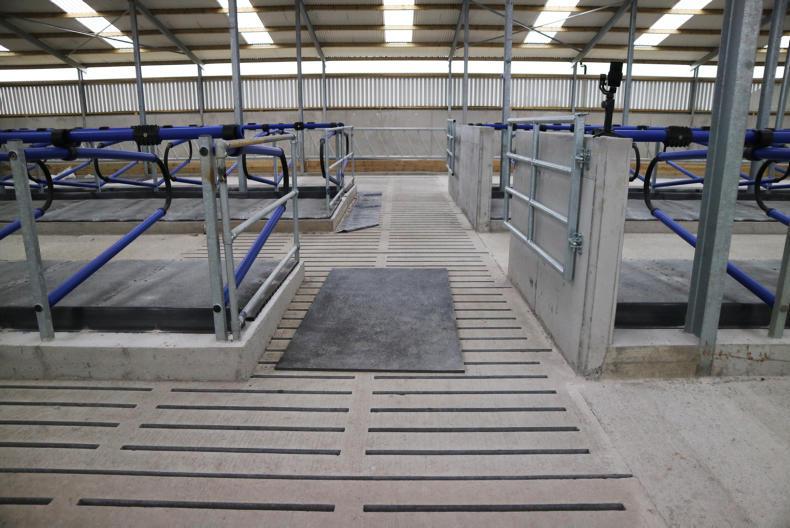
Picture six.
This is important as it ensures that cows have several routes to the feed barrier, which helps to prevent timid cows being bullied.
The central passage running down between the two rows of cubicles is 2.4m wide (Picture seven).
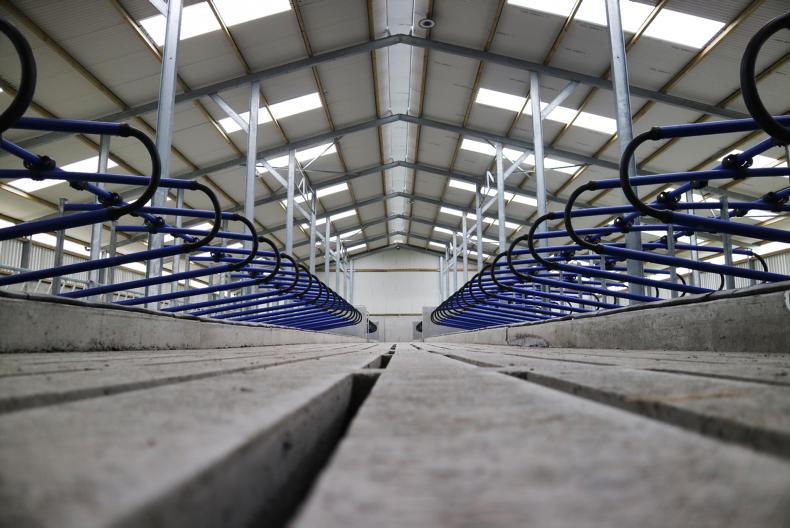
Picture seven.
The passageway along the feed face, beside the double row of cubicles is 4m wide (Picture eight), and 3.5m wide in front of the single row of cubicles (Picture nine).
Slurry storage capacity is high in the new development, with a double slatted tank running along one end of the shed, and a single tank running across the centre of the shed.
Slatted tanks stretch out under the feed passage on either side of the shed, with agitation points outside the shed.
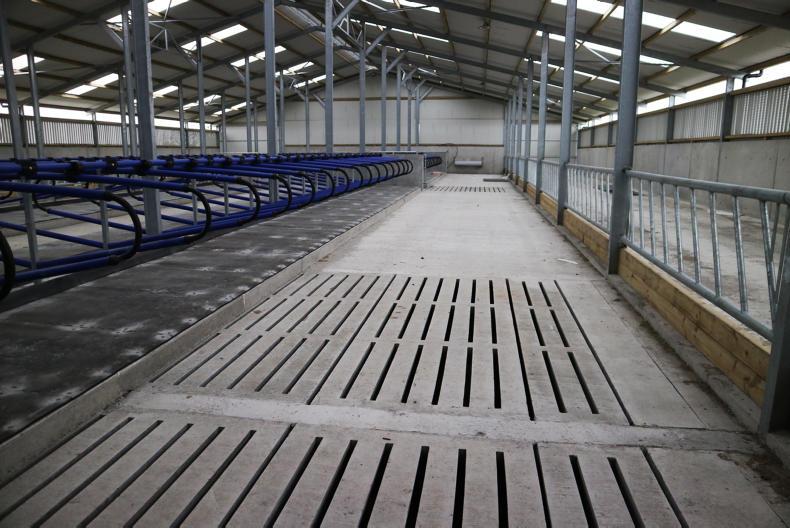
Picture eight.
The tanks are 29.8m long internally and 3.5m wide. They have a depth of 2.45m, or 2.25m when 200mm of freeboard is taken into account.
This gives the new shed total slurry storage capacity of 704m3, or 234.6m3 for each tank.
For a 20-week storage period, which is required in Leitrim, the 96 cows would require 633.6m3. The shed would have enough storage for 22 weeks.
There are no scrapers in the shed, with the decision made to install the Lely Discovery robotic scraper.

Picture nine.
Only having a tank at one end of the shed can put pressure on such a scraper. Hence the addition of the tank across the centre of the shed.
There have been monumental changes in the dairy industry since 1974 when Paddy Kennedy first began dairying and it is fair to say that no other generation has seen, or will ever see, as big of a shift in farming. “In 1974, I was full- time at dairying with 12 cows and a stool; there has been a lot of change since then,” Paddy said.
The total cost of the shed came to approximately €310,000 including VAT.
Donal and Paddy are in a partnership so applied for a TAMS grant on the building. This will allow them to get a 40% grant of a maximum of €160,000, which would mean a grant aid of €64,000.
VAT is worth approximately €36,000, which can be claimed back. This leaves the net cost of the project at €210,000.

Paddy and Donal Kennedy.
“We were always going to go with a grant. It means we have a much higher spec of a shed that will last,” Donal said.
Carroll Consultancy completed the planning permission application as well as the TAMS application for the project. Newtowngore Engineering fabricated and erected the shed and barriers, while concrete work was completed by Hanley Quarries. Easyfix supplied and fitted the cubicles.
Electrical work was completed by Paddy Nugent Electrical and slats were supplied by Longford Precast. Drinkers in the shed were supplied by Teemore Engineering. LED lights are fitted throughout the shed.
While Donal is still less than 40 years old he has been farming for more than five years and so did not qualify as a young farmer for the purposes of TAMS, which would have meant he would have been eligible for a 60% grant on the first €80,000.
It is an issue that Breian Carroll of Carroll Consultancy has encountered: “The five-year setup rule is important for young farmers. We have had a few cases where the young farmer expects 60% grant aid but they are set up in farming more than five years.
"A substantial number of young farmers commenced farming in 2015 so if they are interested in the 60% TAMS grant, they must apply before their five-year setup date in 2020. The young farmer must also be under 40 years of age at application.”
Work is nearing completion on a cubicle shed on the farm of Donal Kennedy and his father Paddy from Gortletteragh in Co Leitrim.
The farm operates a full-confinement system, with the herd of 130 pedigree Holstein cows housed all year.
“We have had cows housed here for the last five years,” Donal said.
“Availability of land around here would be a major issue and a barrier to expansion of a grazing-based system. We just didn’t have the land around the parlour.
“We have wet heavy land around here and this system suits us. It is labour-intensive, but we can produce more milk than we would be able to on a grazing system.
"We would have struggled to push above 60 cows if we hadn’t gone to a confinement system.”
Paddocks are zero-grazed, with cows being fed fresh grass daily.
The farm aims to produce over one million litres in 2020, with the new cubicle shed seen as a key piece of infrastructure to facilitate this. In 2018, cows averaged 7,000 litres at 3.3% protein and 4.5% fat.
The farm operates a split-calving system, with the autumn block calving from September on and the spring block starting in January. Bull calves will be sold off the farm while heifer calves will be kept until they are five months old, at which point they will go off to another farmer for contract rearing.
Pictures one and two & figure one
“We were thinking about this investment for a long time.
"Cows are having to come from four different sheds to be milked and, while we have it well set up, it does add to the labour required,” Donal said.

Picture one.
The new cubicle shed, which is fitted with 96 cubicles, is built alongside an existing cubicle shed with space for 32 cows. This will mean that all cows in the herd can be housed under the one roof.
The shed is an A-roof design with feeding on two sides. There is a double row of cubicles and a single row of cubicles running down through the shed.

Picture two.
“We had thought about leaving one side open. It would have been cheaper but we are in a very exposed site here so it wasn’t a viable option,” according to Donal.

Pictures three and four
The decision was made to install Easyfix rubber cubicles throughout the shed.
The double row of cubicles has a total length of 4.6m with approximately 60cm between brisket boards. Brisket boards themselves are 15cm wide.
Single cubicles beds are 2.3m long in total with no barriers to restrict cows when they go to rise.
One mistake that can often be made is to put a wall in front of a single row of cubicles, this will greatly restrict cows when they try to rise.
All cubicles are fitted with mattresses also.

Picture three.
“When you are operating a confinement system I think there is even more of a focus on cow comfort because you can see the benefits in the bulk tank; that’s why we didn’t go for steel cubicles,” Donal said.
“When you look at cows getting up and down they are much more comfortable and if they hit the side of the rubber cubicle, they won’t hurt themselves.”
For farmers operating a confinement system, there are some key areas to look out for when it comes to cow comfort. The best thing a farmer can do is to get in around cows and observe them closely several times throughout the day. Is there evidence of scrapes or hair loss from cows hitting cubicle partitions? This could be a sign of a bad cubicle design.

Picture four.
We want cows to be doing one of three things at any stage throughout the day, these are either standing to eat, lying and chewing the cud or being milked.
If they are not doing one of these three things, we have to ask why and if poor shed design is to blame.
When it comes to cubicle design, we can use a cubicle comfort index (CCI) to put a figure on how comfortable the cubicle is. A cow will only go to a cubicle to lie down. If she is not lying down, we need to ask why.
CCI is calculated by counting how many cows are in contact with cubicles, then counting how many are lying down and how may are standing up.
If, for example, there are four out of 10 lying down, then the CCI is 40%. You should repeat this at least three times throughout the day and get an average score. The target CCI is 85%.
Movements can often highlight a cow that is not comfortable.
For example, if there is a cow standing in cubicles and they drop the back leg down off the cubicle or they might drop a knee and stand again; this indicates some reluctance to lie down.
Pictures five to nine
Feed passageways on either side of the shed are 5m wide to allow easy access for the diet feeder (Picture five).

Picture five.
There are crossover points at either end of the shed which are 2.6m wide. There is also a 2m wide crossover point half way down the length of the shed (Picture six).

Picture six.
This is important as it ensures that cows have several routes to the feed barrier, which helps to prevent timid cows being bullied.
The central passage running down between the two rows of cubicles is 2.4m wide (Picture seven).

Picture seven.
The passageway along the feed face, beside the double row of cubicles is 4m wide (Picture eight), and 3.5m wide in front of the single row of cubicles (Picture nine).
Slurry storage capacity is high in the new development, with a double slatted tank running along one end of the shed, and a single tank running across the centre of the shed.
Slatted tanks stretch out under the feed passage on either side of the shed, with agitation points outside the shed.

Picture eight.
The tanks are 29.8m long internally and 3.5m wide. They have a depth of 2.45m, or 2.25m when 200mm of freeboard is taken into account.
This gives the new shed total slurry storage capacity of 704m3, or 234.6m3 for each tank.
For a 20-week storage period, which is required in Leitrim, the 96 cows would require 633.6m3. The shed would have enough storage for 22 weeks.
There are no scrapers in the shed, with the decision made to install the Lely Discovery robotic scraper.

Picture nine.
Only having a tank at one end of the shed can put pressure on such a scraper. Hence the addition of the tank across the centre of the shed.
There have been monumental changes in the dairy industry since 1974 when Paddy Kennedy first began dairying and it is fair to say that no other generation has seen, or will ever see, as big of a shift in farming. “In 1974, I was full- time at dairying with 12 cows and a stool; there has been a lot of change since then,” Paddy said.
The total cost of the shed came to approximately €310,000 including VAT.
Donal and Paddy are in a partnership so applied for a TAMS grant on the building. This will allow them to get a 40% grant of a maximum of €160,000, which would mean a grant aid of €64,000.
VAT is worth approximately €36,000, which can be claimed back. This leaves the net cost of the project at €210,000.

Paddy and Donal Kennedy.
“We were always going to go with a grant. It means we have a much higher spec of a shed that will last,” Donal said.
Carroll Consultancy completed the planning permission application as well as the TAMS application for the project. Newtowngore Engineering fabricated and erected the shed and barriers, while concrete work was completed by Hanley Quarries. Easyfix supplied and fitted the cubicles.
Electrical work was completed by Paddy Nugent Electrical and slats were supplied by Longford Precast. Drinkers in the shed were supplied by Teemore Engineering. LED lights are fitted throughout the shed.
While Donal is still less than 40 years old he has been farming for more than five years and so did not qualify as a young farmer for the purposes of TAMS, which would have meant he would have been eligible for a 60% grant on the first €80,000.
It is an issue that Breian Carroll of Carroll Consultancy has encountered: “The five-year setup rule is important for young farmers. We have had a few cases where the young farmer expects 60% grant aid but they are set up in farming more than five years.
"A substantial number of young farmers commenced farming in 2015 so if they are interested in the 60% TAMS grant, they must apply before their five-year setup date in 2020. The young farmer must also be under 40 years of age at application.”















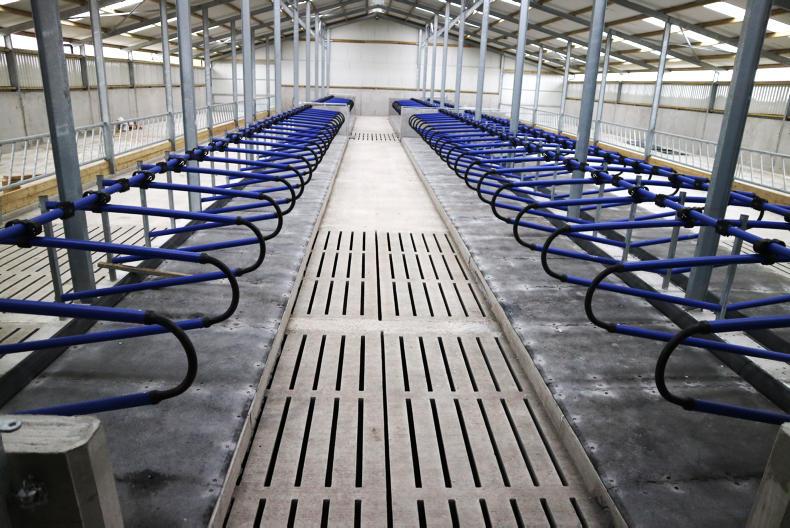
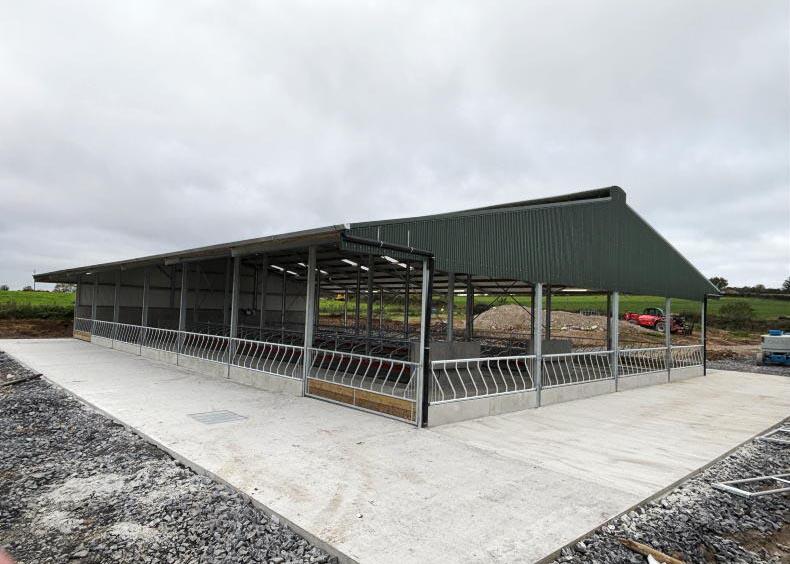

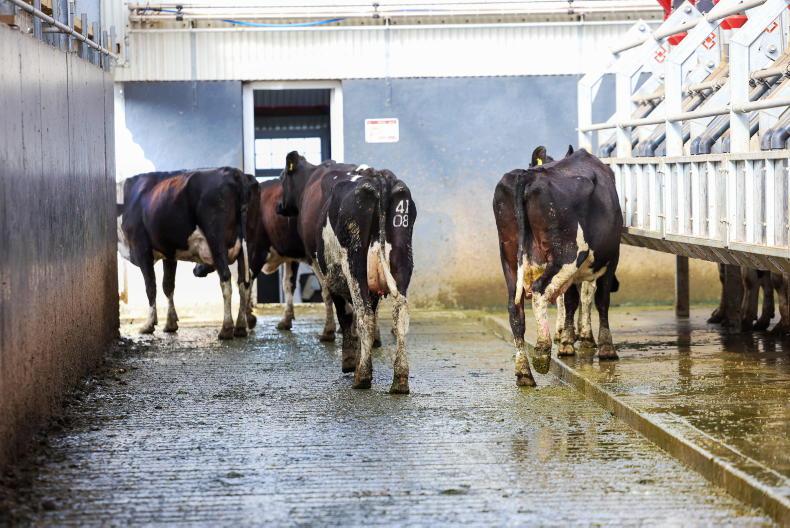
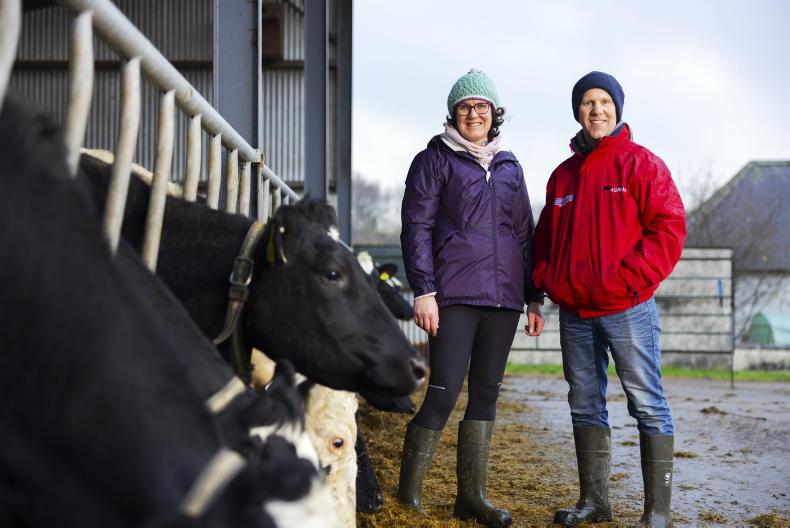
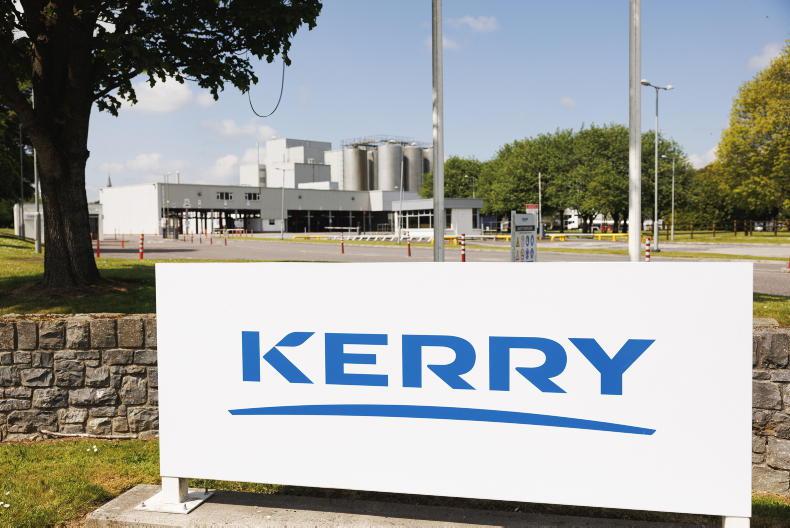
SHARING OPTIONS